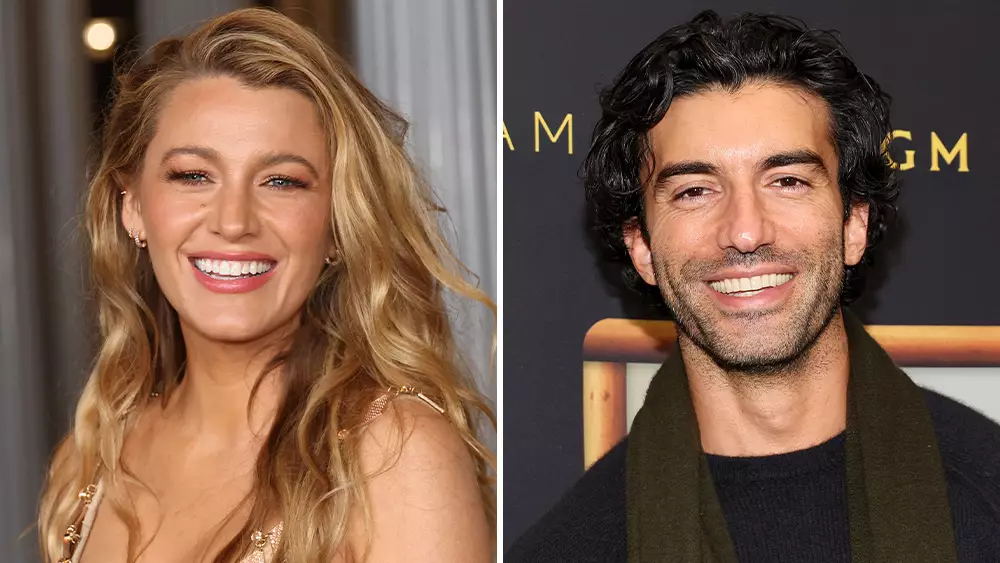In an age where the entertainment industry constantly grapples with allegations of misconduct, Blake Lively’s recent legal battles have distinctly captured public attention. The actress has not merely taken to social media with her grievances; she has escalated matters by filing a comprehensive federal lawsuit against her co-star and director, Justin Baldoni, among others. This move demonstrates the deeper issues at play in Hollywood regarding workplace dynamics, harassment, and retaliation.
Lively’s lawsuit is a response to what she perceives as a systematic effort to undermine her credibility after speaking out about alleged harassment and workplace safety concerns during the filming of “It Ends With Us.” The initial complaint, lodged with the California Civil Rights Department, brought attention to an unhealthy work environment purportedly fostered by Baldoni and his team. Rather than a one-off legal maneuver, this lawsuit reveals the broader context of a toxic culture that often permeates Hollywood, highlighting how power dynamics can skew what is considered acceptable behavior in the industry.
The details of her lawsuit are shocking, consisting of thirteen claims that articulate how Lively felt targeted in a calculated strategy to silence her. It addresses not only personal grievances but raises significant questions regarding corporate accountability within film studios, such as Wayfarer, which Baldoni co-founded. By taking legal action, Lively aims to hold those in positions of power accountable for their actions and the resulting consequences, both personally and professionally.
The Legal Landscape: Strategies and Counter-strategies
The complex interactions surrounding this lawsuit underscore the intricacies of crisis public relations in Hollywood. Baldoni’s counterattack includes a $250 million defamation lawsuit against The New York Times, reflecting a widespread reactive strategy common in the entertainment sector. By branding Lively’s statements and the article as a “smear campaign,” Baldoni’s aim is to redirect public perception and frame himself as the victim in this tumultuous scenario.
However, this bring-and-counter-bring approach may not effectively address the core issues revealed by the lawsuit. The public’s perception of the entire situation is influenced heavily by media portrayals and the associated legal narratives. While filing a lawsuit can be a powerful tool for self-defense, it also opens the door for an intense media scrutiny that can complicate the reputations of both sides involved. Lively’s bold approach speaks to her desire to reclaim her narrative while shedding light on the systemic issues surrounding gender dynamics in Hollywood workplaces.
While Lively’s legal actions spotlight her personal experience, they are emblematic of a larger movement within the entertainment industry advocating for safer working environments. The case not only reveals Lively’s commitment to her personal integrity but also aligns with the calls for a systemic overhaul in how Hollywood handles allegations of misconduct. The fact that her initial complaints were met with retaliatory strategies demonstrates a troubling trend: the normalization of silencing those who dare to speak up.
Furthermore, this case may catalyze discussions that extend beyond Hollywood, prompting broader industry-wide practices and protections for artists and crew alike. It raises the question of how prepared organizations are to deal with allegations of misconduct and whether their responses are more about damage control than genuine accountability. As the lawsuit progresses, it is likely that more individuals who have faced harassment and retaliation will feel empowered to come forward, contributing to an ongoing dialogue about workplace safety.
The ramifications of Lively’s legal battle reach beyond her personal experiences; they could potentially reshape the landscape of Hollywood. As more public figures come forward with their stories, there is an increasing expectation that production companies must cultivate a culture of respect and support. The fears of retaliation, which Lively has highlighted, cannot be overlooked; they remain prevalent in many workplaces, particularly in industries dominated by hierarchical structures.
As Lively’s case unfolds, it will serve not only as a benchmark for discernible change but will also impact how future allegations are perceived and handled. It is vital for stakeholders within the industry to reflect on and amend their practices related to employee treatment, thus ensuring that harassment and retaliation are addressed before escalating into legal disputes.
The tension between Lively and Baldoni is emblematic of a crucial cultural shift currently gripping Hollywood: one that challenges the foundations of power imbalances and seeks accountability. For Lively, this legal course may provide an avenue for personal vindication, while for the broader industry, it serves as a potential spark for meaningful change. The ongoing developments in this case warrant close observation, as they promise to expose not just the individuals involved, but the systemic issues that underpin Hollywood’s culture.


Leave a Reply